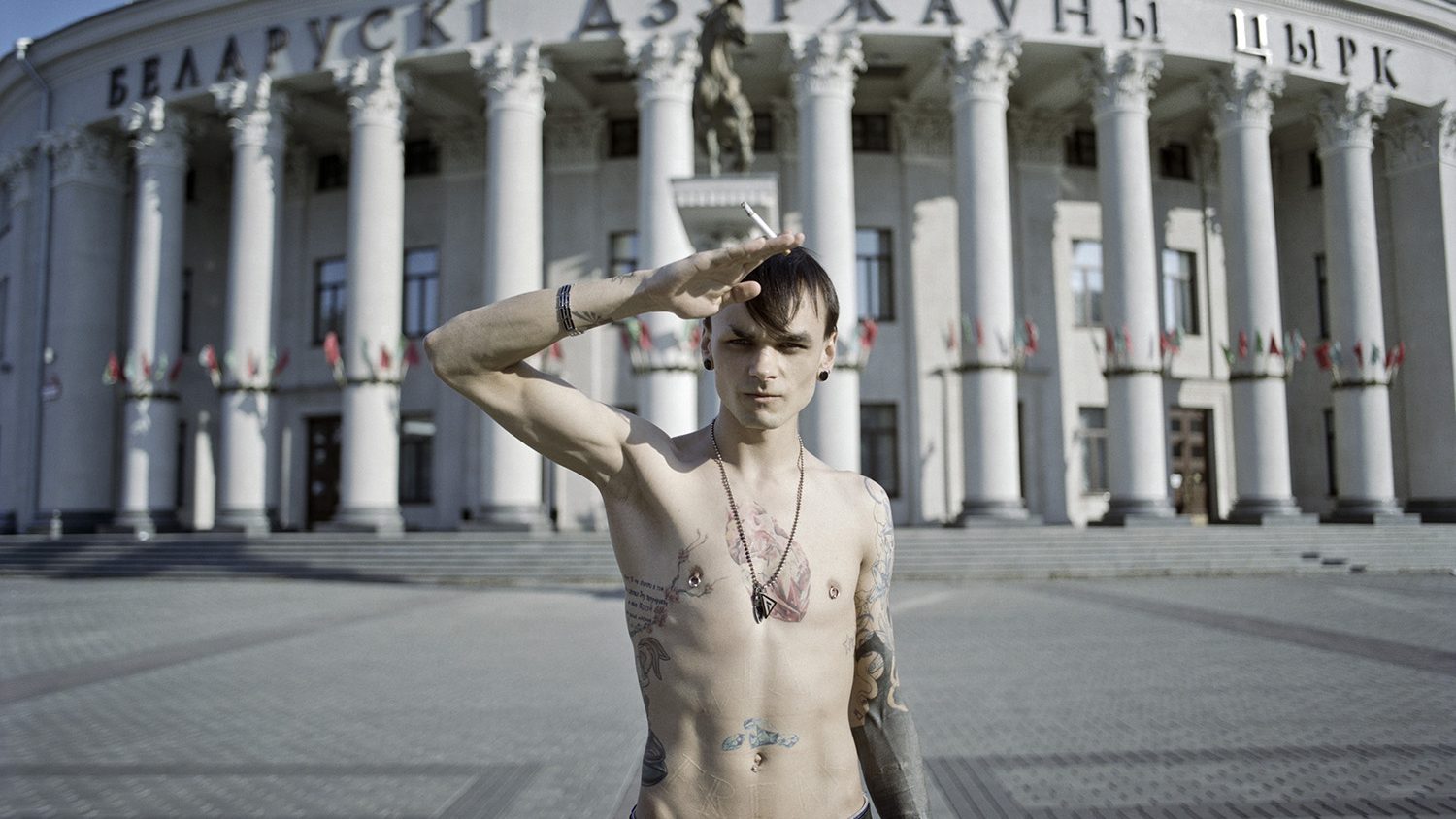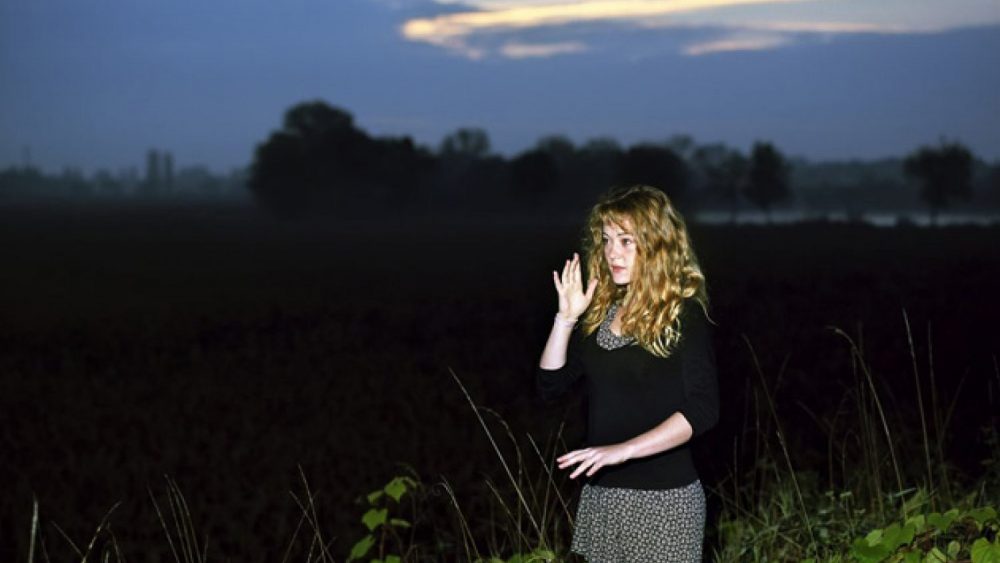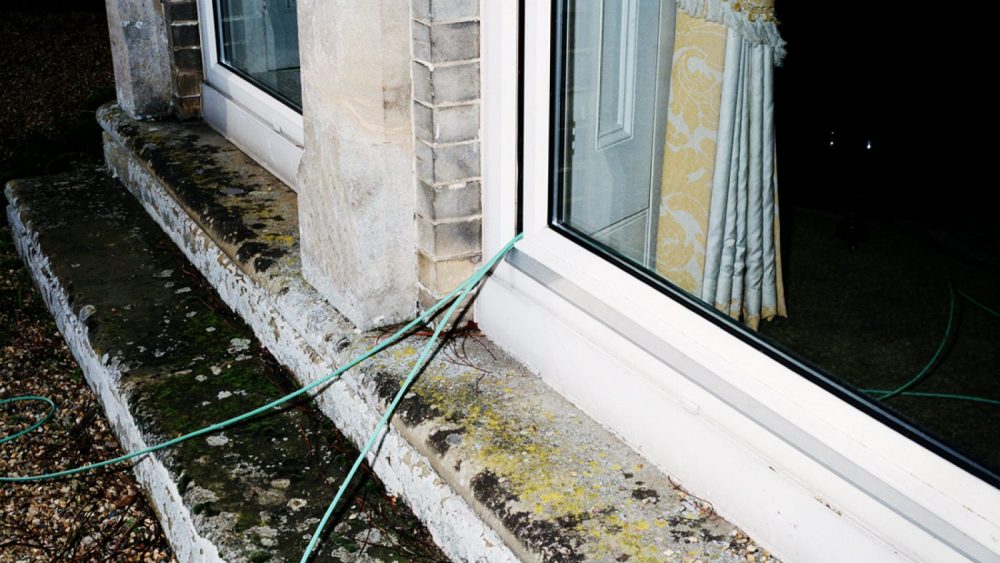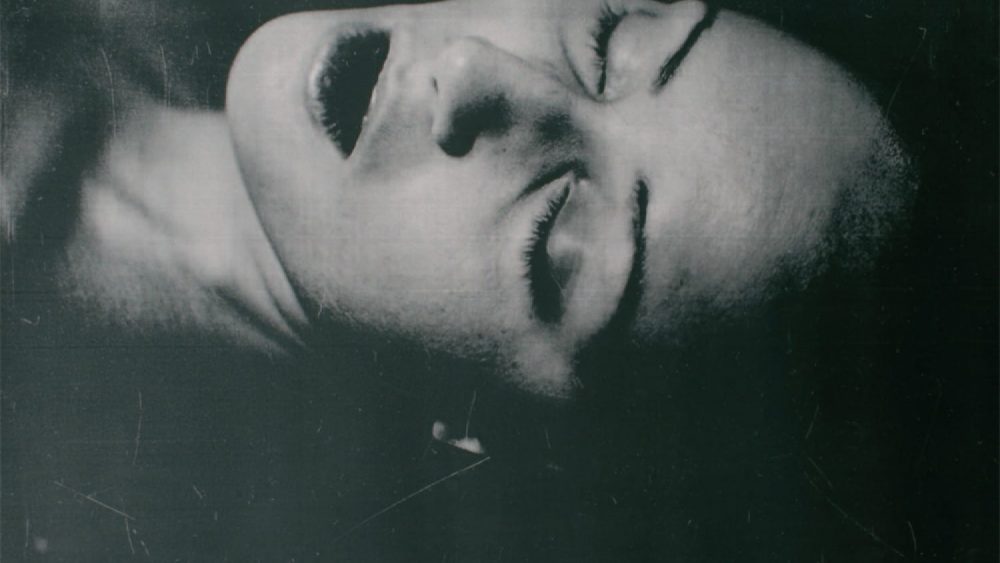Adam Panczuk: Dreams often tell more about reality than we suspect
Adam Panczuk (1978) is a member of the Polish-based photographic collective Sputnik. Since founding Sputnik in 2006, the collective’s self-declared aim has been to document life in the countries of the former Warsaw block. Currently, their project Lost Territories, some parts of which were made in Latvia, is being exhibited around Europe’s photography galleries. This time I met Adam at his recently opened solo exhibition in Warsaw.
We met for the first time during his photographic project Lost Territories in Latvia several years ago. At that time, I was working as his fixer, searching for people who would be open to share their dreams. Adam is fascinated by the idea of capturing the unrecordable – dreams, collective unconsciousness, objects that do not reflect light, but that have, in his mind, an added symbolic value.
Why did you choose to work in Latvia?
It was a very pragmatic choice to work in Latvia, because it is very near Poland and I had never visited the Baltic countries. Such a trip was a convenient choice. The idea of Sputnik from the beginning was to focus on Central and Eastern Europe. We are mentally closer to this post-Soviet space than Western Europe. We still carry inside something from the system. In 2016, we marked 25 years since the collapse of the Soviet Union. We thought that it was a good reason to find out how people in these countries live now. It is also a good question – has the Soviet Union really collapsed? Of course, politically it doesn’t exist anymore, but when you visit Belarus or some countries of Central Asia, they are still closely related to Russia, being politically, military, economically dependent. It seems, maybe not much has changed after all. I decided to perform an aesthetic experiment and try to work in a different visual style. Dreams are perhaps a strange subject.

How did you come to choose this topic?
I wanted to work with a meta-theme, something that I could repeat in many countries. I lack the journalistic skills to interview people. Nevertheless, I have noticed that dreams often tell more about reality than we suspect. The subconscious contains a lot of information about reality. I read an interview with Jung, where he mentioned that in the 1930s he encountered many patients with nightmares and fears, as if it were an unconscious foreshadowing of World War II. On this subconscious level, they felt uneasy. I wanted to find out what is happening in the subconscious of people in this very sensitive age and time, with the threats from Russia and the overall political situation in the world. I wanted to know what kind of unconscious information emerges at night.
Did you find out what awaits us?
Many dream about personal events, imagining their own individual future, but I remember in Latvia one person had a dream about Latvia’s occupation by the Chinese. It the end, in the dream it did not happen. The Chinese invaded Russia but stopped right at the border of Latvia. Also I remember your sister’s dream about Stalin, who started making a tomato and beaver tail soup in her back yard. Stalin was apologizing and asking for mercy, saying that he was not an incarnation of evil. This, for me, raises the question – to what extent is World War II present in the people living in the former Soviet republics. In republics such as Belarus, the myth of World War II propaganda of success is still alive.

Are you planning to continue the project?
Within Lost Territories everyone started their own projects, so I want to finish this project by making an individual book. I am planning to visit more countries, such as Georgia and Ukraine.
The term salvage ethnography describes a genre where the artist is trying to capture disappearing traditions and ways of life. For example, when a photographer carefully leaves the modern tractors or bottles of Coca-cola out, despite them having become a part of everyday life of their subjects long ago, and instead makes them wear old costumes and use rakes on the field. This genre is often criticized for depicting an idealized version of the past which may have never existed as such. It’s not what you do in the project Karcheby. You do something different. You take it one step further. I have a sense that we invent our own imagery, rituals, and myths to show your feelings. Can you comment more on this? What are the reactions of Karcheby people when you show them your works? Do they recognize themselves in them? And why, for example, do you leave out tractors or other such familiar things? It could be a very powerful symbol showing the connection of the people with their land.
For the first three years, I wanted to document the changing scenery of the village. I started in 2005, one year after Poland joined the European Union. As I had imagined, the village started to change rapidly. Therefore, I photographed everything I could see. Tractors, houses, anything I could find. However, I quickly grew to understand that I would not succeed, because the changes were too great in scale to capture in one work.
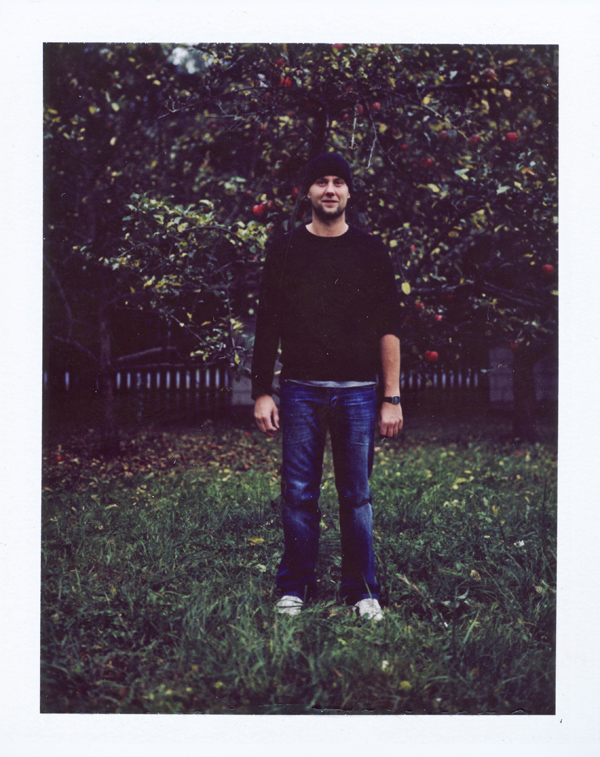
To show the relationship between humans and nature seemed the most important factor. To show how dependent we are on nature. 20 or 30 years ago, I think, people acknowledged themselves as dependent on nature. Nowadays it has been forgotten. Climate change also happens because of the lack of understanding of this dependency. Of course, we see this relationship in the countryside. That’s the reason why I changed the main focus of my project. It seemed the most important to me. At first, I thought of it as documentary reportage, but it didn’t work as I had imagined.
At that time, my grandfather died. At the funeral, the priest, who had known my family for 30 years, prepared a speech about the land my grandfather had tended to for 30 years and his journey to join the soil. Those were powerful words and at that moment, I understood that my work lacked such a strong message.
If you ask me to what extent my photographs are about my vision and how much about the people, I would say it is more or less fifty-fifty.
When I showed the photographs to the inhabitants of the village, they evaluated them in simple terms – ‘like’ or ‘dislike’, as they would with ordinary photographs from family albums. After that, they were invited to the opening of the exhibition and when the photographs were published, they started to talk about them. They discussed one photograph set in winter with an old man holding a clock. They saw the symbolism, saying that the old man does not have much time left anymore. They started to view the photographs on a different level.
I did not tell them to use something special. All the items visible in the photographs were their own. At the beginning, I also photographed the tractors. You can see the photographs on my website, with the title In the Rhythm of the Land. When I was making the book, I tried to incorporate the documentary style photos, but finally, I decided not to use them. It took a long time to decide.
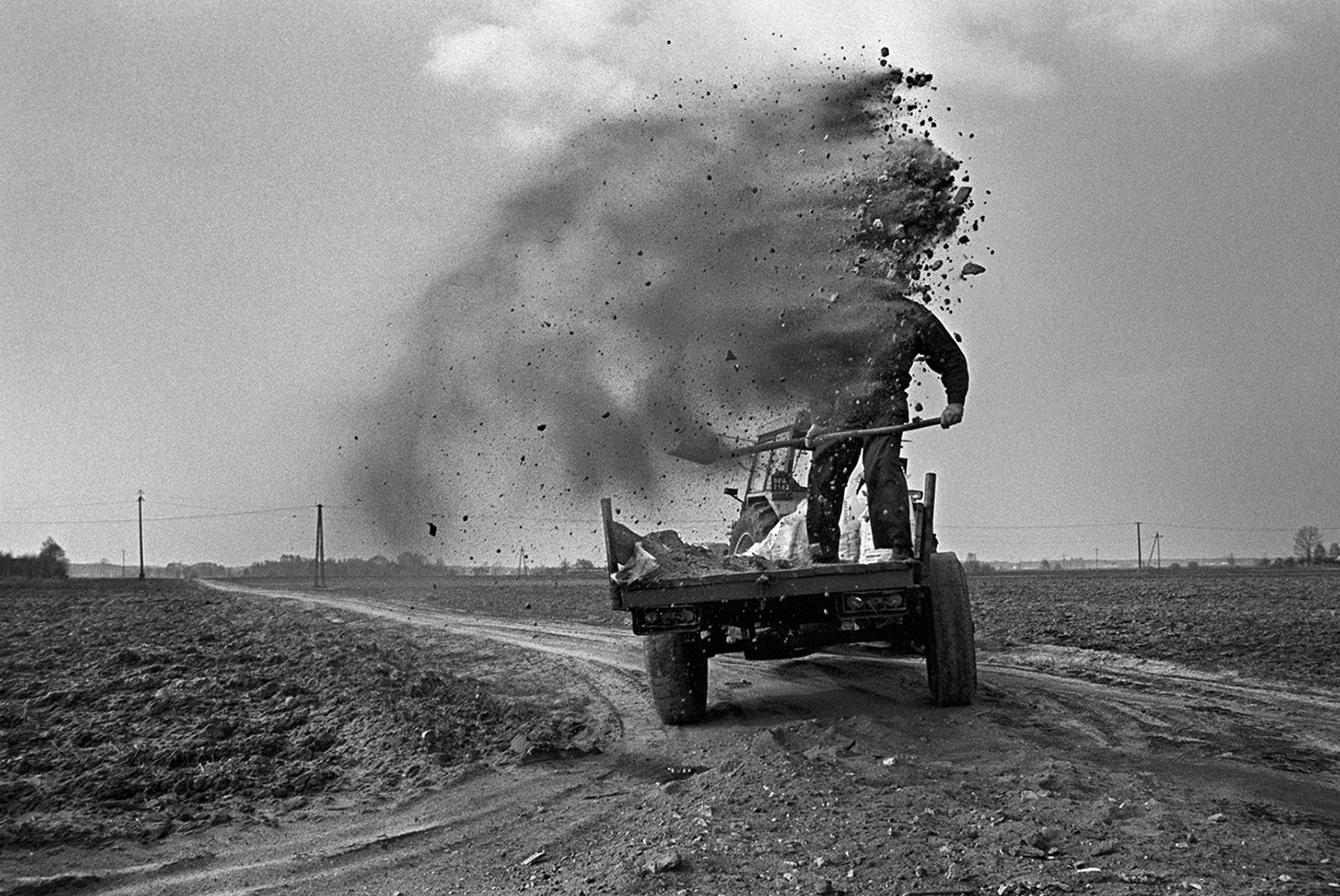
You said that probably not much has changed in the former USSR; in fact when we met, you said that it has probably never ceased to exist as some sort of mental state. The name of the project, however, is Lost Territories and many photos in the series deal with the past. Like memories of a long gone war.. I have the feeling that many photographers in Eastern Europe have a difficult relationship with the past. On the one hand, we want to shrug off the past and be part of Europe, on the other, the former Soviet ruins are aesthetically pleasing, it is exotic, it is what sells, after all, and it is also true that this is what people here live with.
Yes, it is true; I have an impression that the people are still missing the apparent social security which was guaranteed in the Soviet Union. This is why Lukashenko seized power in 1994. He understood this kind of thinking and offered a promise to continue this system. The facade we see behind the border is visually attractive. It is very tempting to create a shortcut by focusing on the visual aspect. However, another cliché would be created. I rule out this aesthetically concerned working style. I am interested in less obvious layers. I think the mental Soviet collapse is still happening. The fall of the Soviet Union had a mental impact on us. Lost Territories means the lost territories of the former Soviet Union. Of course, we can ask the question – how are they lost? Are they still lost?
I have a feeling that in this post-Soviet space photography and public discourse in general are very often obsessed with the past. Is it because we still live in this transformational period, are we looking for ways to culturally define ourselves?
You can feel it more in Latvia than in Poland. In Poland we didn’t have such a strong impact. When the system collapsed, the government was obsessed with de-communism. I think in Poland there is a sentiment about this time, not for the system of course, but about the time. I think people are still looking for their identity.

Yes, but then, is Eastern Europe homogenous? What I find in your photos is that in the pictures taken in Poland, your approach seems warmer, you seem more at home and you are engaged in discussions about topics related to identity. The photographs from I am in Vogue (made in Minsk) seem more distanced, but, perhaps, tell us more about how people live there. I also understand that you spent much less time in Minsk, but is that the only reason?
The question about the homogeneity of Eastern Europe is rhetorical. It is a huge melting pot. Despite that, some national characteristics seem common; including hospitality and openness, but one cannot talk about anything homogenous.
You are right; the photographs taken in Poland are different. They depict a longing for harmony. It is different from the photos taken in Belarus.
I have a Belarusian friend, who lives in Poland. He told me about his sad realization, that there is no such thing a Belarusian soul. Only a post-Soviet soul exists. Visiting Belarus, I felt it purely on an aesthetic level. People are obsessed; the youth spend 70% of their income in order to dress modern.
The photographs from Belarus are an attempt to reach this soul. The first stage was clothing and the attempt to see behind tit. This is why it is meaningful. I thought that the attempt to reach this soul has a jewel-case constriction. In my next visit, I will ask about their dreams and delve into their souls.
